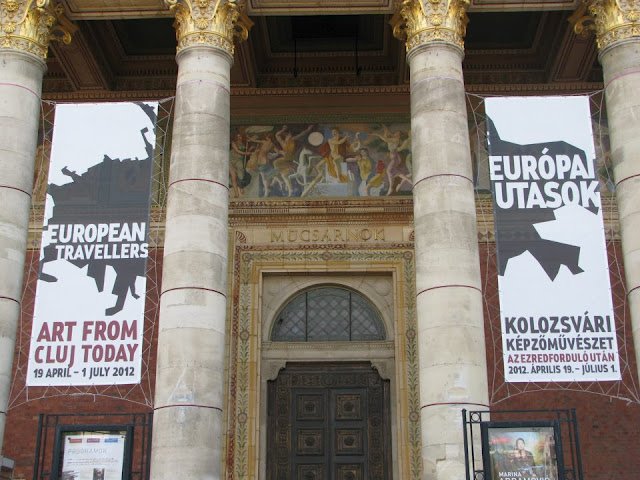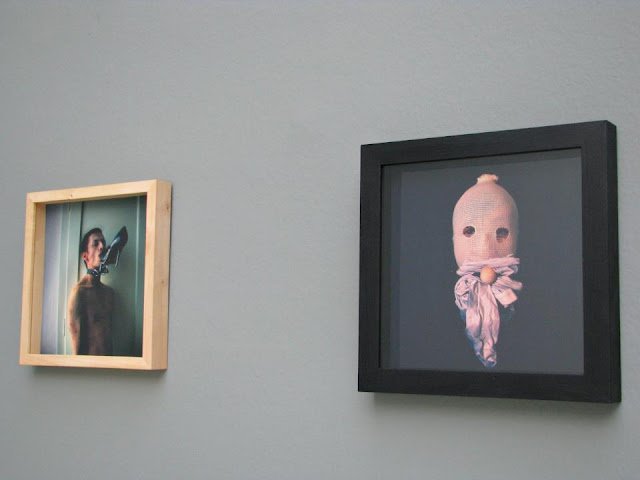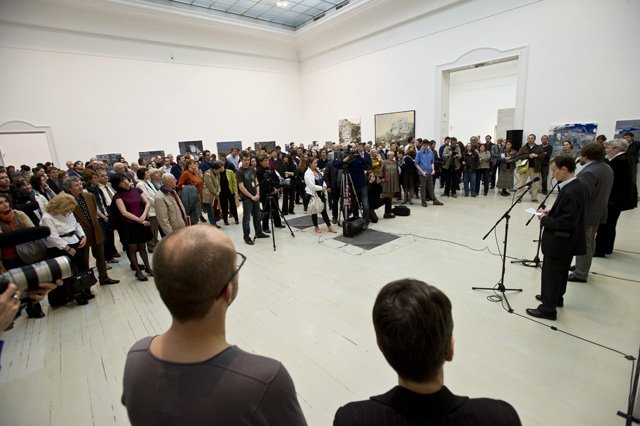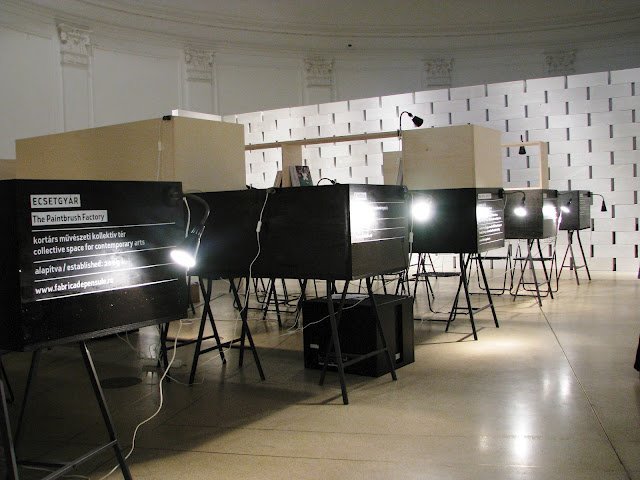EUROPEAN TRAVELLERS
Art from Cluj Today
April 19 - July 1, 2012
Műcsarnok / Kunsthalle
Curator:
Judit Angel
Artists:
Marius Bercea, Zsolt Berszán, István Betuker, Mihut Boscu, Razvan Botis, Mircea Cantor, Radu Comsa, Csaba Csiki, Duo van der Mixt, Oana Farcas, Adrian Ghenie, Simon Cantemir Hausi, Mihai Iepure Gorski, István László, Victor Man & Anna-Bella Papp, Szilárd Miklós, Dénes Miklósi, Alex Mirutziu, Nita Mocanu, Ciprian Muresan, Cristian Opris, Cristi Pogacean, Victor Racatau, Cristian Rusu, Serban Savu, Leonardo Silaghi, Mircea Suciu, Péter Szabó, Sergiu Toma, Gabriela Vanga, Szabolcs Veres
[EN] Cluj’s contemporary art has for years been the subject of special international attention. The term Cluj School in reference to new figurative painting – which appeared in the mid 2000s and has been the topic of debate ever since – and the Paintbrush Factory – which houses studios and independent cultural institutions – quickly became widely known in Europe. Of the Cluj artists, many have exhibited in such prestigious international venues as the Stedelijk Museum in Amsterdam, MoMA in New York, the Kunsthaus of Zurich, and the Neuer Berliner Kunstverein. Their works have been discussed in internationally significant publications and they have collaborated with distinguished galleries. The art institutions of Cluj have notable networks of international connections and continuously host prominent foreign experts.
The success story of Cluj is no overnight “miracle” however, as it is a continuously growing, multi-layered phenomenon. Its development and evolution have not only required exceptional artistic talent, inspiration and perhaps a bit of luck, but in the background, are also the result of mostly private initiatives, as well as an immense amount of work, an open attitude, persistence and conscious self-positioning on the part of independent art institutions.
The Műcsarnok exhibition aims to offer an authentic representation of the “Cluj phenomenon.” As a special point of interest, in addition to the artworks, the show also familiarizes viewers with the most important institutions of the local art scene, which are of many different types. These include centres that house contemporary art exhibitions and accommodate theatrical and dance productions, studios that experiment with digital media, publishing projects, as well as community and activist platforms. The University of Art and Design Cluj, with its strong emphasis on building international connections, also makes its appearance. The more than thirty artists and seventeen art groups and institutions that are featured in the exhibition have been selected with a focus on the – internationally also significant – developments in Cluj within the past decade.
The international embeddedness of the contemporary art of Cluj is also well indicated by the fact that a considerable portion of the works has been borrowed from collections in Western Europe. Thepaintings, graphics, objects, photos, videos and installations featured in the exhibition include both newly realised and site specific works. Similarly to the artist generation of the nineties, albeit with less directness, these artists also react with sensitivity to the challenges of the local social and cultural milieu. The displayed works relate to the mechanisms of history and memory, the ambiguities of the transition period, and the changes in ideology with the same reflectiveness as they do to art history and painting traditions. Figurative painting and critical and lyrical conceptual tendencies – the two defining trends of the contemporary art of Cluj – are represented in a mutually complementing manner at the Műcsarnok.
As part of the special installation of the exhibition, visitors can enjoy an active resting area where they also have access to an abundance of information.
***
[RO] Expoziţia „European Travellers. Art From Cluj Today” îşi propune să ofere o reprezentare autentică a „fenomenului Cluj”. Un interes suplimentar față de operele de artă expuse îl constituie familiarizarea publicului cu cele mai importante instituţii ale scenei de artă locală, din diferite domenii. Acestea includ centre care găzduiesc expoziţii de artă contemporană şi producţii de teatru şi dans, studiouri experimentale de artă digitală, proiecte editoriale, precum şi platforme comunitare şi activiste.
Arta contemporană din Cluj se bucură de o atenţie internaţională deosebită. Termenul „Şcoala de la Cluj”, cu referire la pictura figurativă – apărut în mijlocul anilor 2000 – a fost subiect al dezbaterilor, discutat în publicaţii importante la nivel internaţional şi Fabrica de Pensule, care găzduieşte studiouri şi instituţii culturale independente, a devenit rapid cunoscută în Europa. Artiştii clujeni au expus creaţia lor în muzeee şi galerii de prestigiu internaţional, cum ar fi, de exemplu, Muzeul Stedelijk din Amsterdam, MoMA din New York, Kunsthaus din Zürich şi Neuer Berliner Kunstverein. Instituţiile de artă din Cluj au reţele notabile de conexiuni internaţionale şi găzduiesc continuu experţi proeminenţi din străinătate.
Universitatea de Artă și Design din Cluj, cu accentul său puternic pus pe stabilirea unor legături internaţionale, este prezentă în expoziția European Travellers. Cei peste 30 de artişti, 17 grupuri de artă şi instituţii participante în expoziţie au fost selectaţi/selectate ca urmare a evoluţiei lor pe plan internaţional.
Prestigiul internaţional al artei contemporane din Cluj este indicat şi de faptul că o parte considerabilă a lucrărilor au fost împrumutate din colecţii din Europa de Vest. Picturile, lucrările de grafică, obiectele, fotografiile, video-urile şi instalaţiile prezentate în expoziţie includ atât lucrări noi cât și lucrări site specific. Asemănător generației de artiști a anilor ’90, deşi nu într-o manieră atât de explicită, artiștii prezenți în această expoziție reacţionează cu sensibilitate la provocările mediului local, social şi cultural. Lucrările afişate se referă la mecanismele istorice şi ale memoriei, ambiguitățile perioadei de tranziţie, precum şi la schimbările ideologice, în același fel cu care o fac raportându-se la elemente din istoria artei şi tradiţiilor din pictură. Atât pictura figurativă, cât şi tendinţele conceptuale critice şi lirice – cele două tendinţe definitorii ale artei contemporane din Cluj – sunt reprezentate într-un mod complementar la Műcsarnok.
Ca parte specială a instalației expoziționale, vizitatorii se pot bucura de o zonă de odihnă activă unde au acces la o varietate de informaţii.








